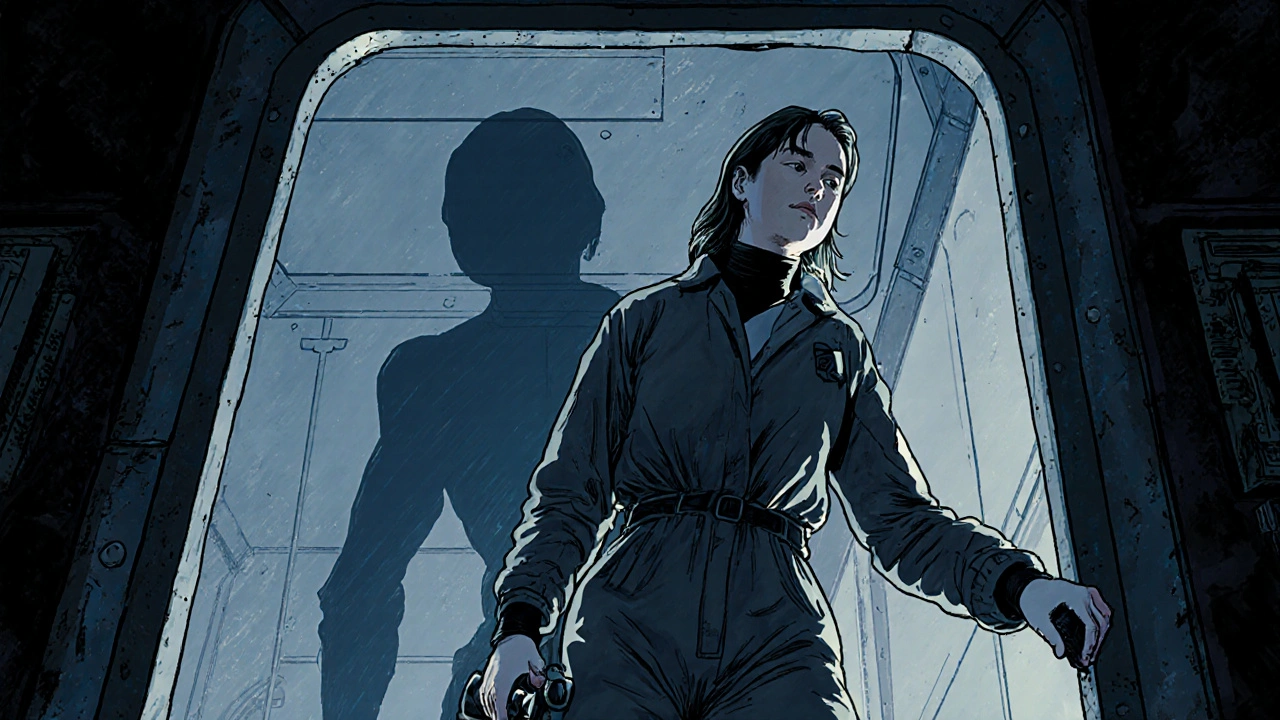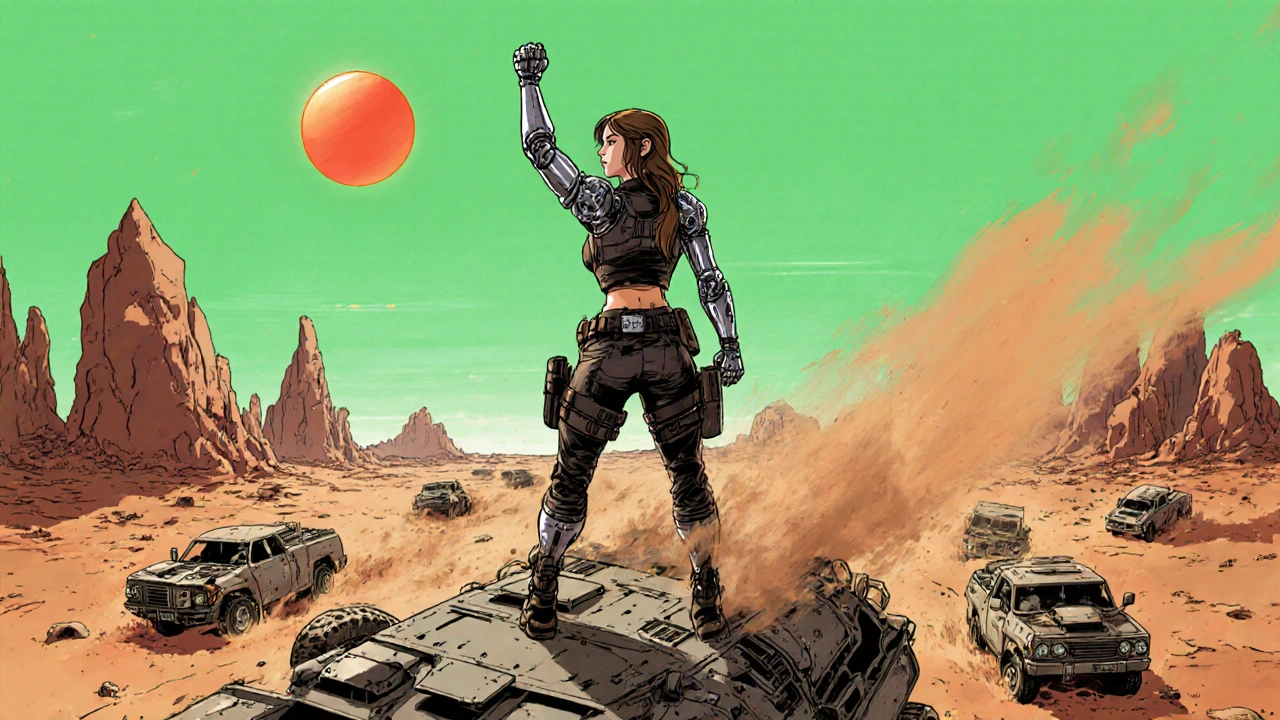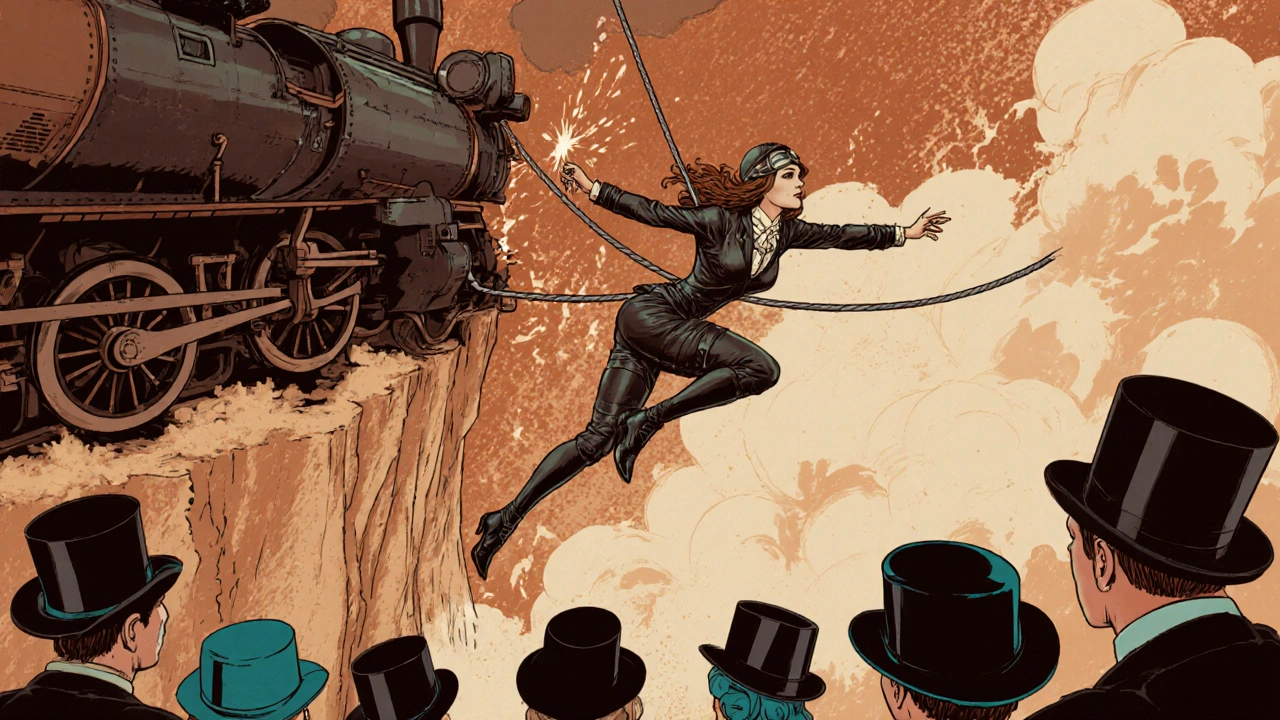For decades, action movies were seen as a man’s world. Explosions, car chases, fistfights - they all seemed to belong to heroes with broad shoulders and deep voices. But that story is older than you think. Women have been leading action films since the silent era, long before Sigourney Weaver faced off against the Xenomorph in Alien. And now, with Furiosa: A Mad Max Saga (2024) smashing box office records and redefining what a female action hero can be, we’re seeing the full arc of a revolution that’s been brewing for over 100 years.
The Forgotten Pioneers: Silent Film Heroines
Long before CGI or stunt doubles, women were doing their own stunts on silent film sets. In the 1910s and 1920s, actresses like Pearl White and Grace Cunard weren’t just acting - they were driving cars off cliffs, swinging from ropes, and fighting off villains in serials that drew crowds week after week. Pearl White, known as the "heroine of a thousand stunts," starred in over 100 films, many of them action-packed cliffhangers. Jean Gunier, a French filmmaker, wrote, directed, and performed in 22 action films herself by 1910 - a fact often erased from mainstream film history. These weren’t side characters or love interests. They were the protagonists. The studios made dozens of these films because audiences loved them. Then, something changed. By the 1930s, Hollywood shifted. Studios decided audiences preferred male leads. The female action hero vanished - not because she wasn’t popular, but because the system chose to ignore her. For more than 60 years, the genre lay dormant.The Breakthrough: Ellen Ripley and the Birth of the Modern Heroine
When Alien hit theaters in 1979, no one expected it to change cinema. But Sigourney Weaver’s Ellen Ripley did. She wasn’t sexy. She wasn’t there to be saved. She wasn’t even the first person to spot the alien - she was the one who survived it. Screenwriter Dan O’Bannon wrote Ripley without gender in mind. The studio almost cast a man. But Weaver brought something raw, real, and utterly human to the role. Time Magazine called her the first female action hero. Critics at the time didn’t just praise her performance - they were stunned by how little she was sexualized. Unlike Catwoman in the 1966 Batman movie, who was designed to seduce and distract, Ripley wore baggy jumpsuits, kept her hair short, and focused on survival. She didn’t need to be beautiful to be powerful. She just needed to be smart, brave, and relentless. Alien didn’t just make Ripley iconic - it proved a woman could carry a high-stakes sci-fi action film. It earned $104 million worldwide on a $11 million budget. And it opened the door.The 1980s and 1990s: Building the Foundation
The 1980s gave us Linda Hamilton’s Sarah Connor in The Terminator (1984) and its sequel Terminator 2: Judgment Day (1991). In the first film, Sarah is a waitress. By the end of the second, she’s trained in combat, forged steel armor, and ready to kill a machine to save humanity. Her transformation wasn’t just physical - it was psychological. She went from terrified victim to unstoppable force. Critics called it one of the most powerful character arcs in action cinema. Meanwhile, in Hong Kong, Michelle Yeoh was redefining martial arts films. In Yes, Madam! (1985), she fought alongside Cynthia Rothrock - a seven-time black belt - in choreographed sequences that still hold up today. No wires. No green screens. Just raw skill. Yeoh didn’t play a sidekick. She was the equal, the leader, the one who ended the fight. And then there was Pam Grier. In blaxploitation films like Coffy (1973) and Foxy Brown (1974), Grier played vigilantes who took down corrupt systems with their bare hands. She wasn’t a victim. She wasn’t there for the male gaze. She was justice, wrapped in leather and fury. Her films were low-budget, but they had soul. And they still have an 8.6/10 rating on IMDb from over 14,000 users.
The 2000s: Commercial Breakthroughs
The 2000s were when studios finally realized female-led action films could make real money. Angelina Jolie’s Lara Croft in Tomb Raider (2001) grossed $274.7 million worldwide. She wasn’t just a pretty face in a tight outfit - she was a skilled archaeologist, fighter, and survivor. Jolie followed it up with Mr. and Mrs. Smith (2005), Wanted (2008), and Salt (2010), becoming the first woman to sustain a run of successful action roles. But the real game-changer was The Hunger Games (2012). Jennifer Lawrence’s Katniss Everdeen wasn’t just a hero - she was a symbol. A girl from District 12 who outsmarted a corrupt government, survived the arena, and sparked a revolution. The film made $694 million globally. The trilogy earned nearly $3 billion. Studios took notice: women could lead blockbusters.The 2010s: The Golden Age
The 2010s didn’t just see more female action heroes - they saw better ones. Mad Max: Fury Road (2015) wasn’t just a film. It was a manifesto. Charlize Theron’s Furiosa didn’t need a love story to justify her strength. She didn’t need to be saved. She was the reason the story moved forward. Critics called it a feminist masterpiece. The New York Times’ Manohla Dargis wrote: "It’s not about gender. It’s about humanity." And it worked. The film made $375 million worldwide, got 10 Oscar nominations including Best Picture, and became one of the most influential action films of the decade. Black Widow in The Avengers (2012) and Captain Marvel (2019) proved superhero films could carry female leads too. Captain Marvel made $1.1 billion. Wonder Woman (2017) made $821 million. For the first time, studios weren’t just tolerating female leads - they were betting big on them.
The Problem with Ensemble Casts
But not all representation is equal. In many ensemble films, women are still treated as supporting characters. Black Widow’s arc in The Avengers series was often sidelined. Her emotional depth, her trauma, her sacrifice - all felt like afterthoughts compared to Iron Man’s journey or Captain America’s leadership. Audiences noticed. Reddit threads like "How Furiosa Compares to Other Female-Led Action Films" got over 5,000 upvotes. Fans praised Furiosa because she wasn’t just "a strong woman" - she was a fully realized person with goals, pain, and agency. Meanwhile, a 2021 Letterboxd review of The Avengers summed it up: "Black Widow’s arc feels like an afterthought." The difference? Furiosa drives the plot. Black Widow supports it.Furiosa: A New Chapter
Enter Furiosa: A Mad Max Saga (2024). This isn’t just a prequel. It’s a reclamation. Anya Taylor-Joy, who replaced Charlize Theron, spent six months training in vehicle combat, weapon handling, and stunt work. The film doesn’t just show Furiosa as a warrior - it shows how she became one. Her origin story is brutal, complex, and deeply human. Director George Miller didn’t make her more sexualized to appeal to men. He didn’t give her a love interest to soften her. He gave her a past, a purpose, and a voice. And audiences responded. The film opened to strong reviews and a $180 million global box office - proof that the hunger for authentic female-led action isn’t a trend. It’s a demand.What’s Next?
The industry is changing. Female directors like Kathryn Bigelow, Patty Jenkins, and Niki Caro are now helming major action films. The number of top-grossing action movies with sole female leads jumped from under 5% in 2000 to 25% in 2023, according to Deadline Hollywood. Nielsen found that 68% of action film viewers under 35 now expect gender-balanced casting. But challenges remain. The pay gap is still wide. Top male action stars earn 2-3 times more than their female counterparts for similar roles. And too often, studios still cast women in roles that are defined by their gender - "the first female this," "the woman who beats the men." The future isn’t about being "the first female action hero." It’s about being the best hero - period. As Gina Prince-Bythewood, director of The Old Guard, said: "We’re moving beyond the ‘first female this or that’ and toward a future where the best person for the role, regardless of gender, gets the part." And that’s the real win.Who was the first female action hero in film?
The first widely recognized female action hero in modern cinema is Ellen Ripley from Alien (1979), portrayed by Sigourney Weaver. However, silent film pioneers like Pearl White and Grace Cunard were leading action serials as early as the 1910s, performing their own stunts and carrying entire films. Ripley was the first to break through mainstream Hollywood as a non-sexualized, central protagonist in a major studio film.
Why is Furiosa considered such a groundbreaking character?
Furiosa, especially in Mad Max: Fury Road and Furiosa: A Mad Max Saga, is groundbreaking because she’s not defined by her relationship to men, her appearance, or her trauma. She’s driven by purpose - to reclaim her home and save others. She leads the plot, makes critical decisions, and endures extreme physical hardship without being sexualized or reduced to a stereotype. Her strength is quiet, relentless, and human.
Are female-led action films profitable?
Yes. The Hunger Games trilogy earned nearly $3 billion globally. Wonder Woman made $821 million, and Captain Marvel hit $1.1 billion. Even smaller films like Atomic Blonde turned a profit on a $30 million budget with $108 million in revenue. The genre’s market share in major studio action films grew from under 5% in 2000 to 25% in 2023, proving they’re not niche - they’re bankable.
Why do some female action heroes feel underdeveloped?
Many female characters in ensemble films are written as sidekicks or emotional anchors for male protagonists. Black Widow in early Marvel films is a prime example - her backstory and emotional arc were often sidelined. When studios treat women as "add-ons" instead of leads, the characters feel incomplete. The best female action heroes, like Ripley and Furiosa, are given full agency, motivation, and growth.
What’s the biggest challenge facing female-led action films today?
The biggest challenge is still pay equity and typecasting. Top male action stars often earn two to three times more than their female counterparts for similar roles. Studios also still hesitate to greenlight original female-led action films, preferring to rely on established franchises or superhero properties. True progress means casting women in original, high-budget action roles - not just as backups to male leads.

